Learn: Diamonds > Cut Quality
Introduction
Hearts & Arrows
GIA Grading
Right Cut for Earrings & Pendandts
Dimensions & Light Leakage
GIA and AGS Cut Grade Viewing Distances
Deep Cut & Light Leakage
Fancy Shaped Diamonds
Symmetry & Polish
Holloway Cut Adviser (HCA)
Brilliance Fire & Scintillation
ASET SCOPE
Diamond-Cut Myths & Facts
1. GIA XXX cut quality assures me the diamond will sparkle:
Wrong. GIA’s Excellent cut grade favours deep light leaking diamonds
2. Hearts & Arrows diamonds are super ideal sparkly:
Not always, the range is huge and some are cut too deeply
3. Ideal cut diamonds sparkle when dirty:
Yes and no, shallower diamonds are less affected by grime and gunk
4. The best Oval, Marquise and Pear cuts should have a dark bow tie:
Not true, space grading systems developed by Garry Holloway avoid bowties
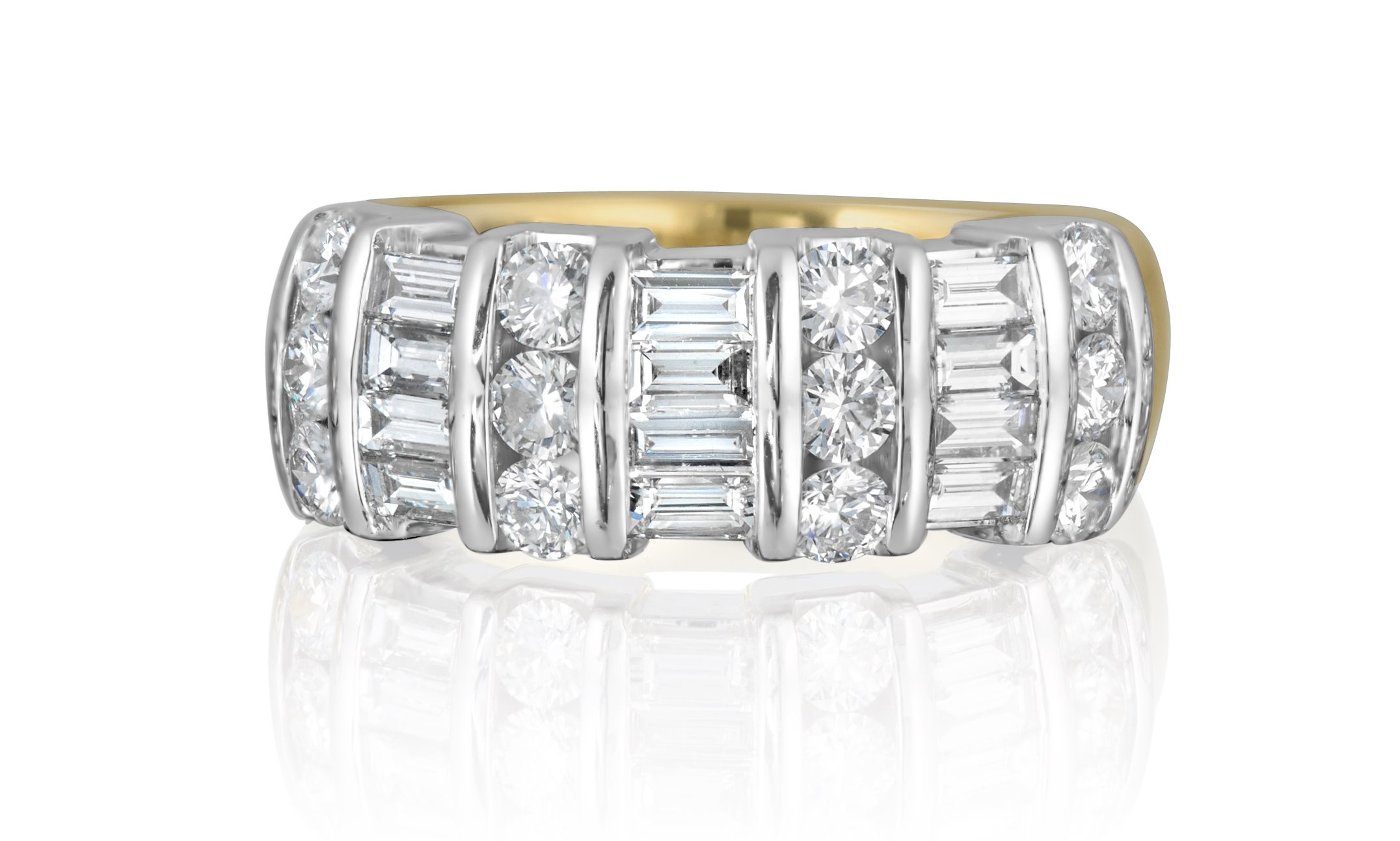
Read on for all the answers
Diamond cut quality is a mess – Let’s try to unravel the myths!
By now you have probably read all of the standard information on what to look for in a GIA report to recognise a quality cut. So let’s take a look at the industry and what is categorised as an Excellent cut and why you should question these standards.
The only thing humans can do to make the most amazing gem mineral desirable gets messed up more than 80% of the time. Diamond cutters compromise on the best performing proportions and optical precision in order to make profits. If they don’t, they go broke. Simple.
They must maximize the dollar yield from each rough diamond. A manufacturer can have the best equipment and skilled personnel, but to stay in business they simply must save as much carat weight (at the expense of sparkle) as possible.
GIA’s lenient grading has set a low standard for cut quality
GIA’s round diamond top cut grade, Excellent, is so lenient that more than two-thirds of the round diamonds it grades achieve it. Within that top-grade range, there are great, good, good enough, not so good, and more than half are badly proportioned diamonds. GIA’s top cut grade should be limited to good, better, and best but that would be bad for GIA’s half a billion dollars a year business and their paying customers.
“Good enough” diamonds may be OK for most, as most people are unaware that better or best exist. The main thing most people remember about their diamond is the carat weight, so it’s no surprise the diamond industry is driven by rough diamond yield to make a profit.
How can you choose a better cut quality diamond?
One simple tool is Dimensions and Light Leakage
A 1 carat GIA XXX diamond can have a diameter below 6.3 millimeters and still achieve GIA’s Triple Excellent – while around 6.4 to 6.5mm is the optimum diameter.
A diamond that has too small a diameter will be cut too deeply and that means it will leak a lot of light out the bottom or pavilion.
The trouble with dimensions is you need to be a mathematician to calculate the best size for a 1.15ct or a 0.92ct diamond. (Using dimensions is an impossible task for fancy-shaped diamonds.) The most common workaround used for a century or more is table size and depth percentage. This works as a rough guide to eliminate or reject diamonds but is not a selection system. See the 60:60 image right.

Some “old timers” used 60:60 as a guide to assess a well-cut diamond. All three diamonds above have 60% table and 60% total depth proportions. The problem with this approach is that it only works well for a small range of crown and pavilion angle proportions. Only the center diamond would achieve excellent grades in GIA’s and HCA systems, but in a larger than one carat diamond it would have slightly reduced fire because the table is a 2% or 3% larger than optimal.
The left and right-side diamonds would achieve Fair or Poor cud grades with GIA’s lenient system.
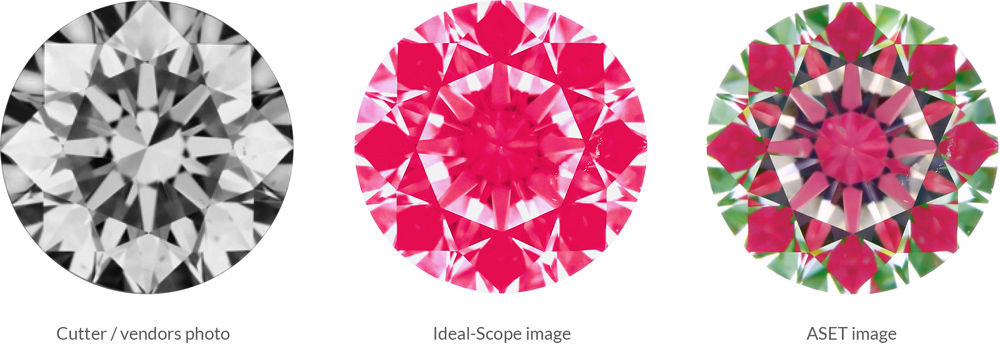
The dull areas equate in the diamond photo equate to the pale leakage areas in the Ideal-Scope and ASET images.
The three images above are taken from a manufacturing cutters website of a very deep cut diamond that GIA has graded as Excellent cut quality. Below: The diamonds proportions have been entered into Holloway Cut Adviser (below) and it rates 5.3 (on a score where HCA excellent is 0-2.0) and because of the small ‘spread’ for a one carat diamond (6.29-6.34mm) and accounting for the light leakage near the edges of the stone, it rates a Look Like size of small for its carat weight.
DeeP Cut & light leakage
If a diamond is cut too deep, there will be light leakage just inside the table region and around the edges or upper girdle facets of a diamond. This light leakage in the ring just inside the table region is referred to as the “ring of death”.
You can also clearly see that in the ASET scope image shown. That ring of leakage reduces the diamond’s overall light return, exaggerates the colour in that area (because light is bouncing around inside the diamond before most of it leaves via the pavilion).
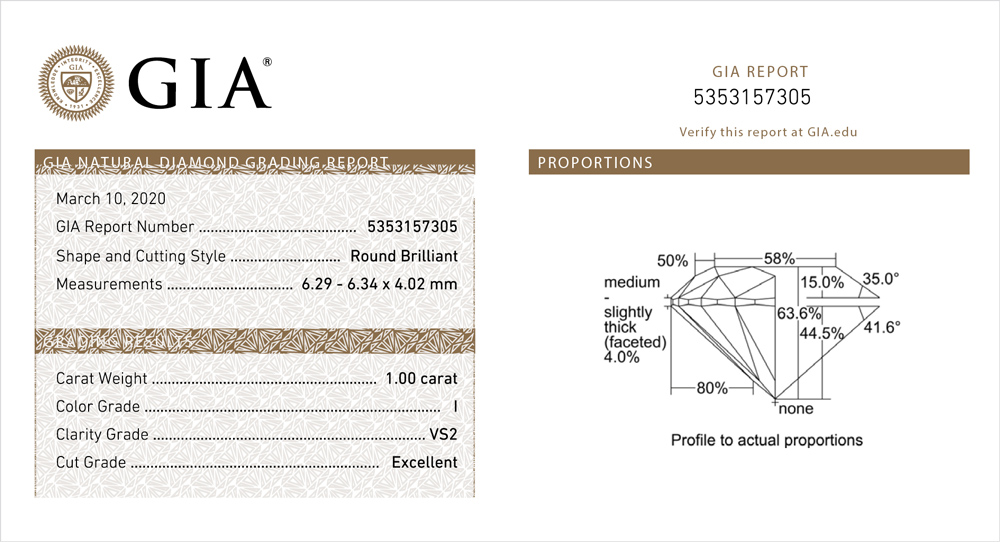
If you were to view the GIA 6.3mm 1.00 carat diamond in the table above next to a well cut 0.90 carat diamond, the 0.90 carat diamond would appear to be the same size and sparkle more beautifully. A 90-point diamond of the same color and clarity will cost two thirds as much as a 1.00 carat GIA Excellent cut.
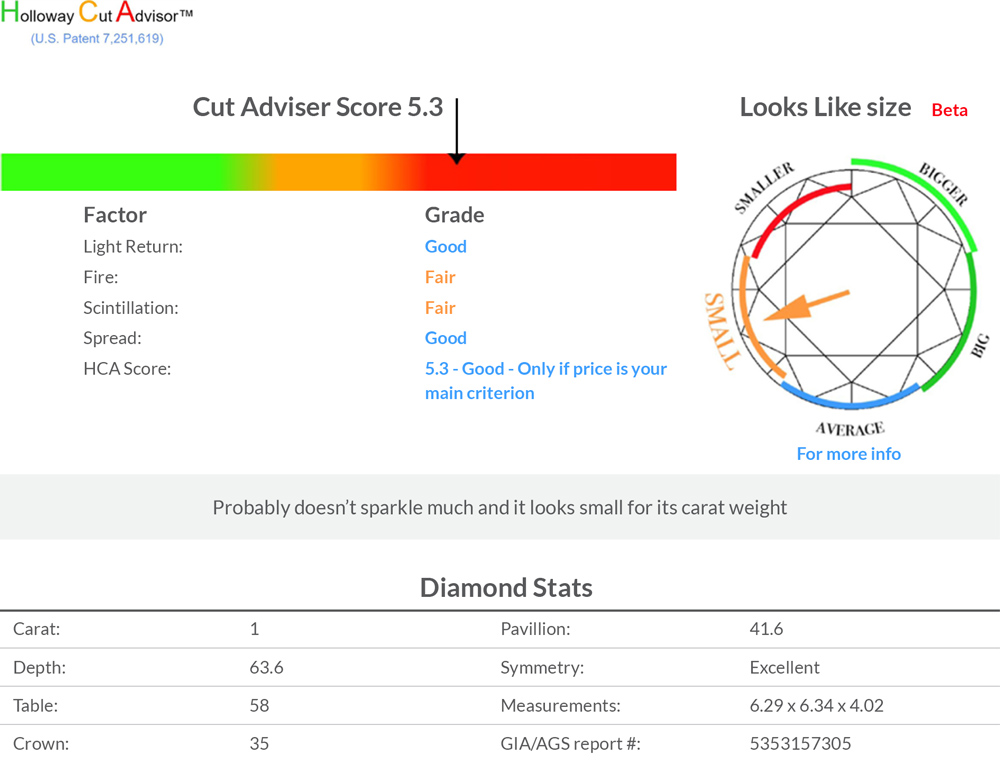

Symmetry: A bad facet meet point. Historically GIA assessed symmetry using human assessment while viewing a diamond with a microscope. The focus was on variations in facet size, shape, girdle thicknesses and how accurately diamond facets met. New technologies and cutting improvements have made this approach virtually obsolete; it is rare to find a diamond with poor meet point symmetry.
Polish: It is rare to find a diamond faceted today with polish quality that reduces a diamonds sparkle and optical performance.
Symmetry and polish
Imagine we used standards developed fifty years ago to rate new cars or almost any other consumer product? Since GIA established their polish and symmetry standards the equipment used for polishing diamonds and quality control of symmetry has improved enormously. The absence of diamonds with Poor grades once again indicates grading standards have not kept up with technology.
The table below supports the fact that the vast majority of round brilliant cuts that GIA grades receive its top cut quality grades. If the grading system was in favor of consumers rather than cutters and sellers there would be far fewer diamonds in the top cut grade.
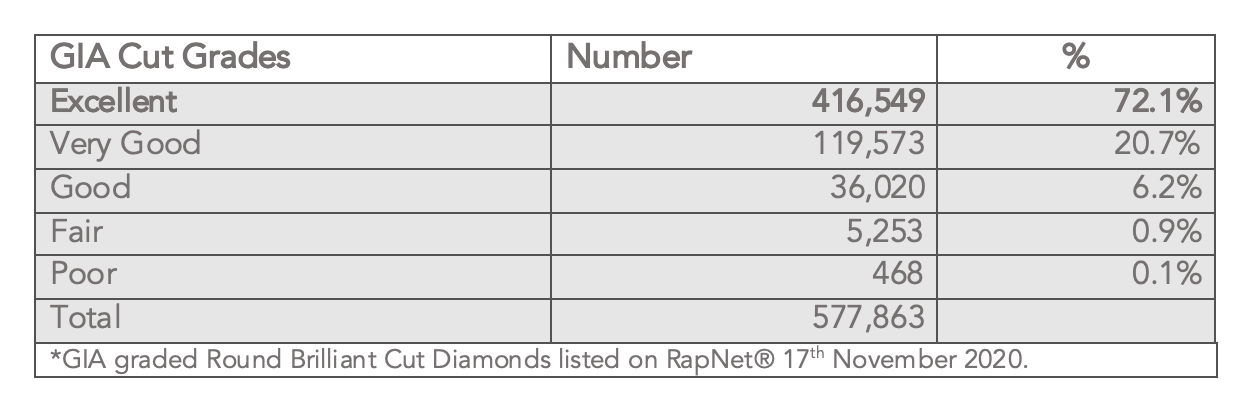

Brilliance Fire and scintillation
Brilliance is the human perception of diamond brightness. It is the most important feature of a beautiful diamond.
Brilliance is not simply light return; it involves complex issues that include scintillation or contrast with the added variable of human perception. However, a diamond with poor light return cannot display optimal beauty.
Fire is the term used to describe flashes of colour resulting from spectral separation or dispersion of white light into rainbow flashes.
Scintillation is a factor of the movement of a diamond and its brightness and contrast. Bright diamonds return lots of light from the surroundings back to a ‘face up’ observer. If light from above leaks out the back of a diamond, naturally it has less brightness. But the light that enters and leaves in the face-up direction is wasted because your head blocks lights from that direction. Diamonds that are too deep or very shallow do this – they have areas that act as a mirror back to the viewer; they return less light and so they have less brightness.
But to be brilliant, a diamond needs more than just brightness from light return. Consider the contrast of a chessboard, although it has only half the light return of a sheet of white paper, it appears brighter, especially when it is moved because it ‘scintillates’
Read more
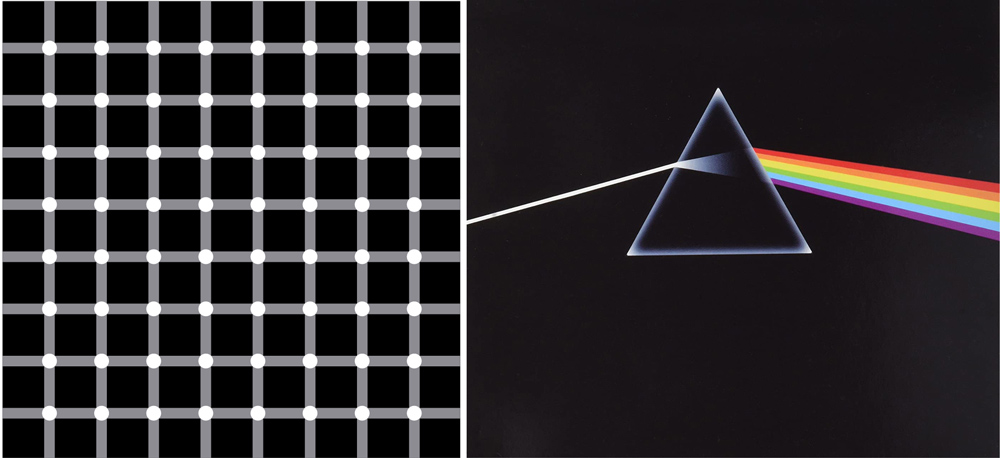
A moving chess board scintillates but human vision is even more complex. The optical illusion on the left scintillates and sparkles more with both eyes open than one only. The LP or CD cover of Pink Floyd’s Dark Side of the Moon shows how a diamond disperses light to create fire.
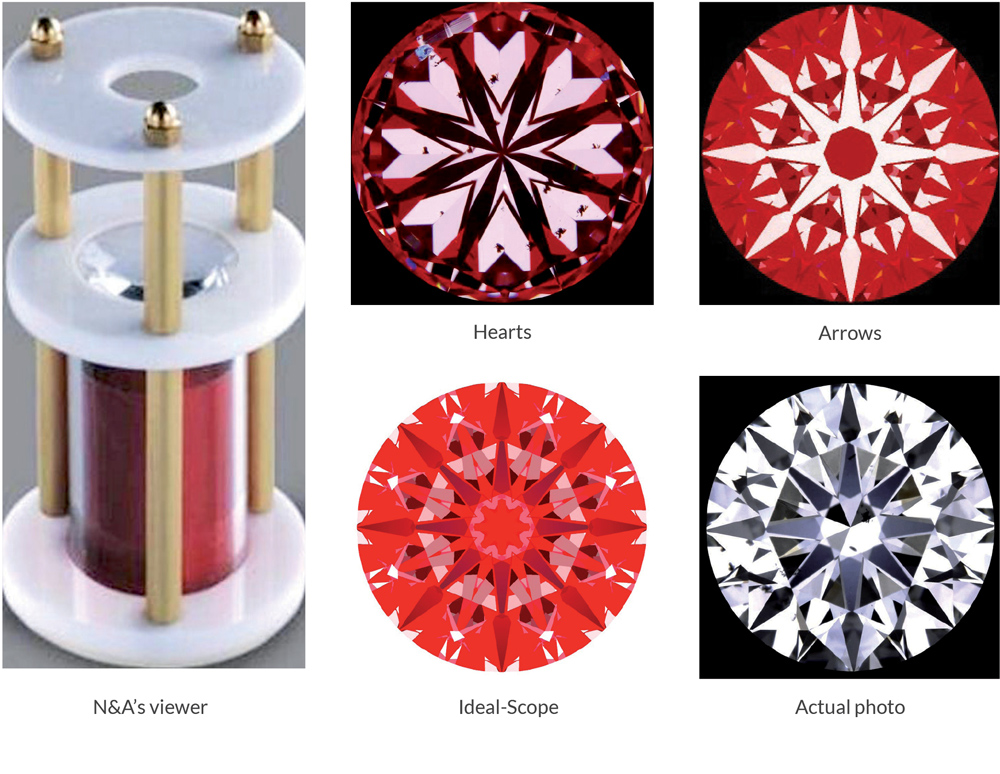
Deeper cut Hearts and Arrows diamonds fail Ideal-Scope, HCA and are rejected by Holloway Diamonds.
Heart and Arrows
The Hearts and arrows viewer has a black base, so leakage is not visible.
Hearts and Arrows (H & A) is a type of viewer invented in Japan in the 1980’s as a means of assessing optimal symmetry. Contrary to popular belief, not all diamonds that have both hearts and arrows patterning are ‘super ideal cuts’ since these patterns occur across a very wide range of proportions. Wider still than shown in these images.
The viewer shows white hearts when the diamond is upside down, and an arrows pattern face-up. H&A’s patterned diamonds are touted as the bee’s knees of perfection.
The Hearts & Arrows patterns slightly favor deeper cuts by not indicating leakage the way Ideal-Scope does.
You can see evidence of that on the images shown for the 35-degree crown angle with 41-degree pavilion angle. The white H & A’s arrows are the same black arrows you would see with an Ideal-Scope. The difference and the advantage of the Ideal-Scope are that the leakage is also apparent. The Hearts and arrows viewer has a black base, so leakage is not visible.
Read more
symmetry grades and hearts and arrows
As with so many other gradings, the standards set by GIA are rather easy for cutters to achieve. Here is one example of a diamond with rather poor optical symmetry that received GIA’s Excellent symmetry grade.
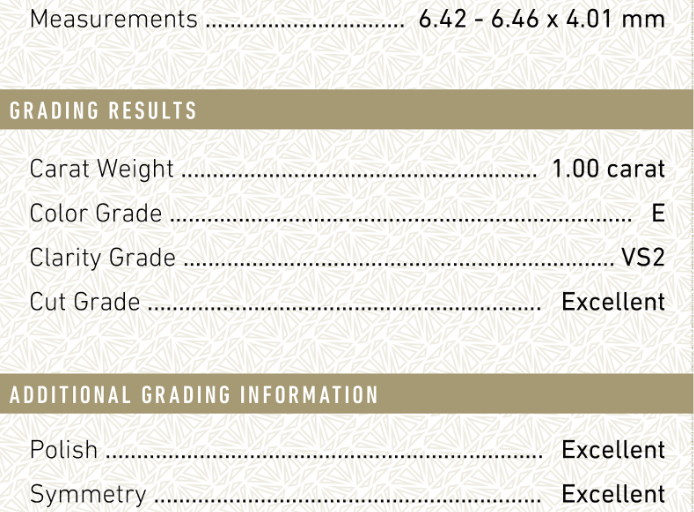
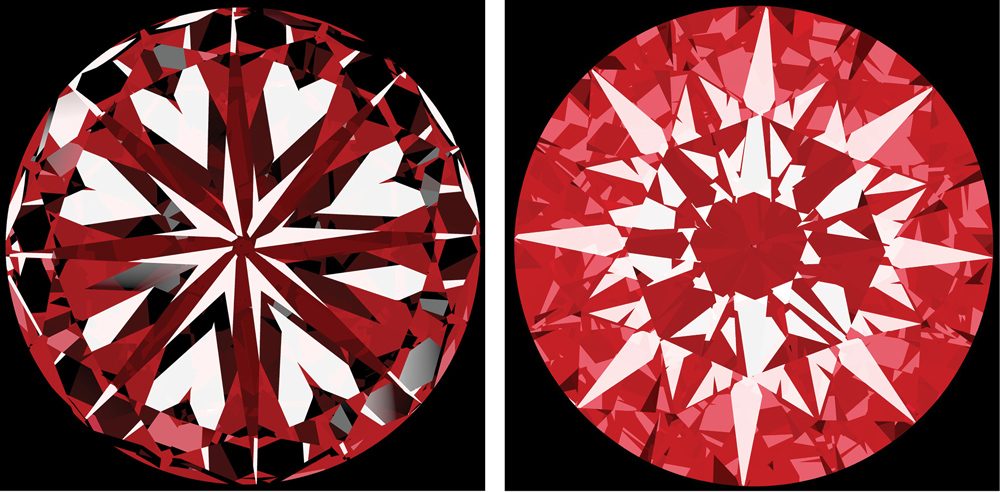
The right cut for earrings and pendants
Firstly, earrings and pendants face out not up.
Secondly, it is rude for people to invade the wearer’s personal space. Because of those two facts, you can get bigger better-looking diamonds for less money.
The most brilliant diamonds for earrings and pendants will be slightly shallower. This ‘thought experiment’ will help explain why:
Imagine you are holding a diamond ring (or if you have a diamond do this experiment for real), hold the diamond so it faces directly to your eyes at arm’s length. With the diamond between you and the floor, gradually move the diamond up in an arc toward the ceiling, all the time looking and observing its appearance. Do it in different rooms with different lighting and outside in the shade (diamonds do unpredictable things in direct sunlight).
You will see the diamond gets gradually darker as you move it from below to above.
Diamonds in rings face the ceiling where lights are or the sky most of the time when you and others are looking at them. When you are looking down on the diamond there is a good chance the diamond will capture and return lots of light. But earrings and pendants are facing that in-between direction.
The diamonds that work best for earrings and pendants are those that can direct light from windows and lights at a distance right back to an observer. For round diamonds that means slightly shallower proportioned diamonds work best.
Deeper round diamonds collect their light from a wider area. They will appear patchy; brighter near the top and dark near the bottom. They gather their light from a wider angle – from floor to ceiling.
For earrings and pendants, it’s rude for people to invade the wearer’s personal space. Shallower diamonds look dark on very close inspection, but they measure and look bigger for their carat weight. They also do not lose as much brilliance when dirty. Earrings especially tend to be dirty most of the time.
You can also save money buying GIA Very Good cut grade shallower diamonds.
Shallower diamonds can suffer from head obstruction but return more light from perpendicular rather than a wide fan of light. See how the girl’s head blocks the lights making the diamond darker. So in a ring, your head will obscure a lot of light. But for earrings and pendants, you are within slapping reach if anyone gets close enough to stop your diamonds sparkling!
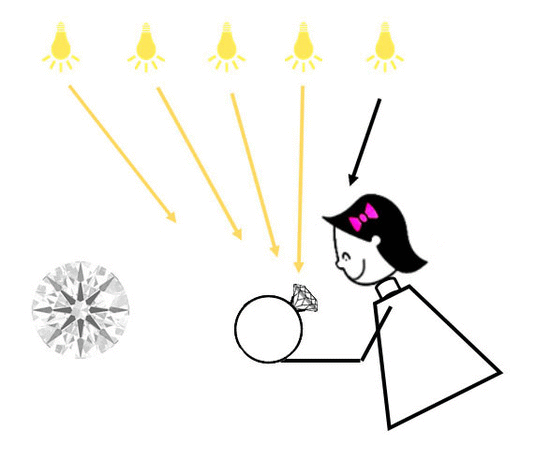
GIA and AGS Cut GRade Viewing Distances
It is not a surprise that the close-up distances we can focus get further away for most people as we age. That is called presbyopia and unfortunately is more prevalent in women (who are far more likely to be gazing at diamonds). Those people invariably are prescribed spectacles or contact lenses. In the past two decades, the focus distance that many people are choosing has lengthened as a result of using digital screens rather than printed material. The International Standards Organisation (ISO) notes that often 40 cm or 16 inches is the standard for reading, sewing, or fine assembly. This distance has increased slightly over time and for many people, their prescriptions are in the range of 50 cm or 20 inches to 120 cm representing common distances to display screens.
Why does this matter? Because the two organisations that have established grading standards for round brilliant cut diamonds, GIA and AGS have not accounted for this.
AGS for example used a US Military standard of 25 cm or 10 inches as the basis of its computer-modeled grading system.
GIA used a variety of hemispheres with even closer viewing positions to perform human tests to confirm computer-predicted results. More importantly, as shown in the image of the woman looking at two diamonds with a lightbox, she is in a darkened room. This creates an enormous relative dark zone which skews the resultant proportions toward much deeper diamonds.
Fancy shaped diamonds
Firstly, there are no cut quality grades for fancy shaped diamonds (other than those done by the small AGS labs). Labs only give symmetry and polish grades. It’s the wild west. Less than 5% of fancy shape diamonds (FSD) meet or pass our cut quality criteria.
So why do cutters cut them? Because they are often able to fit a much heavier diamond into some rough diamond shapes. There are very few 0.80ct rounds ever cut and the reason is simply that often a 1ct cushion princess or Asscher can be squeezed out of that rough diamond and it will fetch more money.
On the positive side, fancy shaped diamonds can save you money.
If you’re under family or peer pressure to come up with say a 1ct or 2ct diamond, then you could save up to a third of the cost by buying a fancy shaped diamond. There are lots of other reasons to buy a fancy shaped diamond. They are a great way to stand out from the round diamond crowd. They often look better in huge stones than rounds diamonds. Above 10ct round brilliant cut diamonds facets become so large that they look a little boring, they have more fire but less scintillation.
The best way to select a fancy shape is to use an ASET scope.
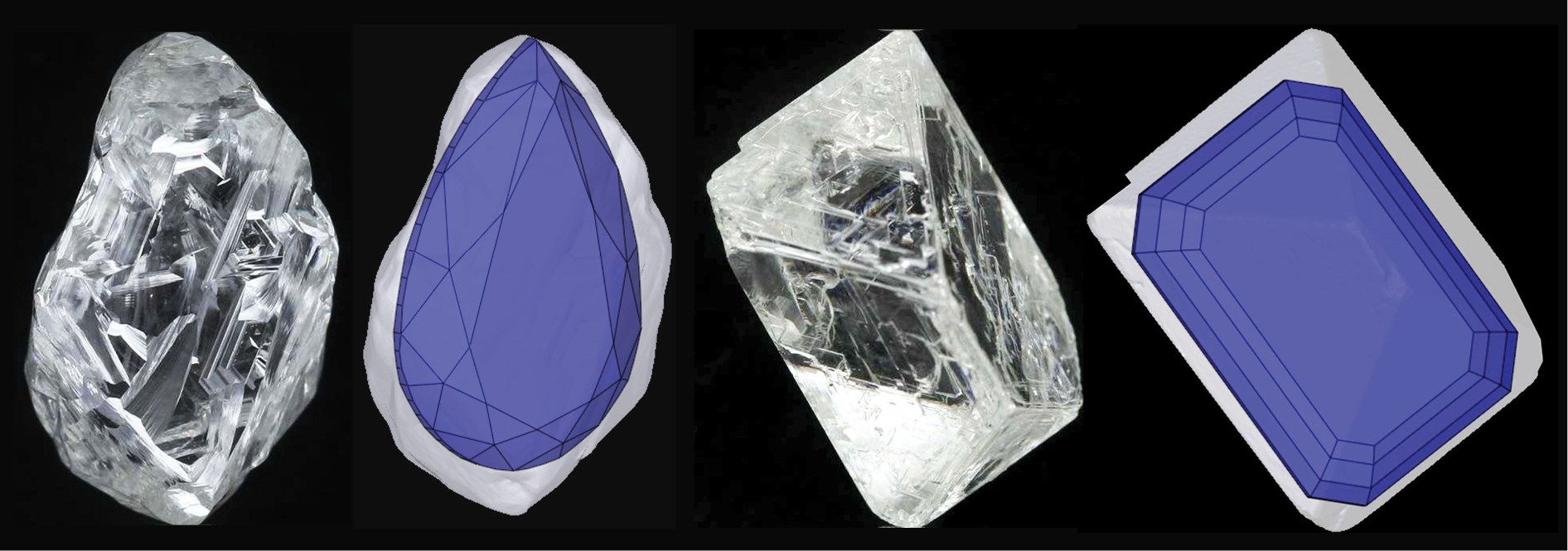
Holloway Cut Adviser (HCA)
Of 325 of 1.00ct GIA XXX, D-F color, VS2 clarity diamonds listed on the RapNet® business to business trading platform on Monday 2nd of November 2020, only 10.15% fell within the my recommended proportion parameters on the table below and scored under 2.0 on the Holloway Cut Adviser (HCA).
Read more

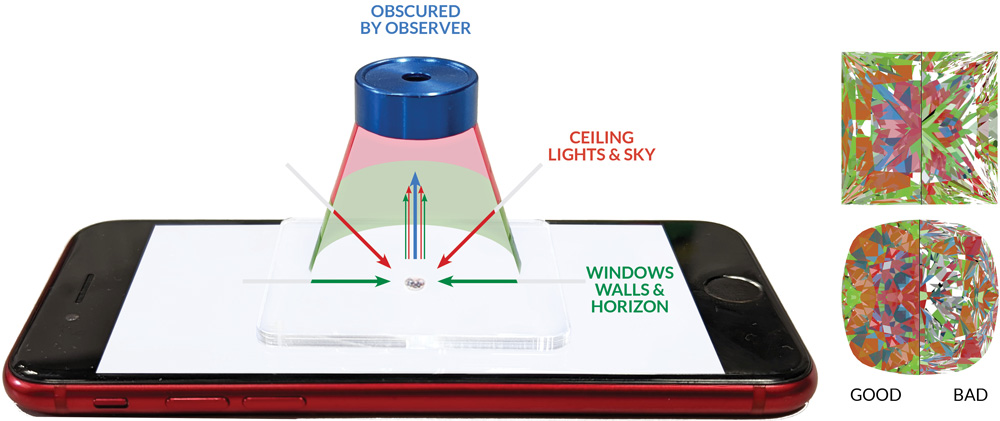
ASET Scope
The ASET scope is the best way to get a great fancy-shaped cut diamond. This is not as simple a tool to use as an Ideal-Scope, but if you’re in the market for a FSD you will get a huge benefit from using this or requesting the report.
Read more
